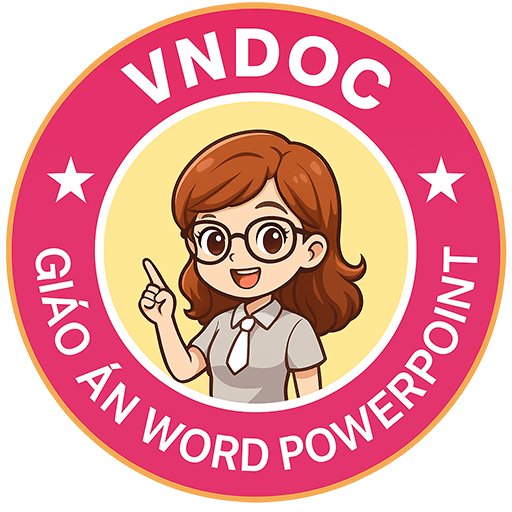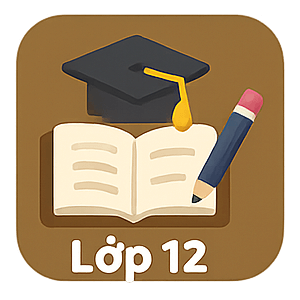Giáo án tiếng Anh lớp 12 Tuần 15 sách mới
Giáo án tiếng Anh lớp 12 chương trình mới Tuần 15
Giáo án lớp 12 môn Tiếng Anh Tuần 15 dưới đây nằm trong tài liệu Giáo án môn Tiếng Anh 12 theo tuần do VnDoc.com sưu tầm và đăng tải. Tài liệu tiếng Anh gồm chi tiết trình tự giảng dạy giúp quý thầy cô chuẩn bị trước khi lên lớp hiệu quả.
TIẾT 43: UNIT 5: CULTURAL IDENTITY
LESSON 4. SPEAKING
A. Aims and Objectives:To talk about activities that can help maintain cultural identity.
- To teach Ss to practise sharing and giving responses to new information.
- By the end of the lesson, students will be able to:
+ Express their opinion about some activities on cultural identity.
+ Perform their viewpoints to other people in real life.
B. Preparations: - Teacher: Handouts, textbook, lesson plan and pieces of papers.
- Students: Textbook
C. Methods: - The whole lesson: Integrated, mainly communicative.
D. Procedures:
|
Time/Stages |
Activities |
Interactions |
|
1. Homework 8 minutes |
- Check students’ work books |
T <--> Ss |
|
2. New lesson
10 minutes
11 minutes
13 minutes
|
Maintaining cultural identity Activity 1: Work with a partner .Discuss and decide if these activities can help to maintain cultural identity. Can you add any more activities? -T asks students to work in pairs. T has them discuss and decide if the activities can help maintain cultural identity especially in situations when people are away from their home countries. -T encourages students to add more activities. Suggested answers: 6. Singing/ Listening to folk songs 7. Reading heritage folklore 8. Conserving heritage sites Activity 2: Work in pairs. Talk about why each of the activities in 1 is important. -T encourages them to talk about why the activities in 1 (or their suggested activities) are important maintaining cultural identity Example: I think it’s important to preserve our native language. It’s a vital part of culture and it is critical to a person’s cultural identity. Our first language helps us to develop intellectual abilities and shape our cultural identity. It enables us to communicate, establish links with family and community members, and acquire and value native culture. Activity 3: Work in groups of three. Choose an activity in 1. Discuss how it will help to maintain cultural identity in the age of globalization. Use the reasons discussed in 2 and any information you may want to add. -T encourages them to use the reasons they have discussed in 2 and any additional information they may want to add. |
Individually
T <--> Ss
Pair work
T <--> Ss
Group work
Ss <--> Ss
|
|
3. Consolidation 2 minutes |
- Summarize what they have learnt by asking Ss some questions: What have you learnt today? What can you do now?
|
T <--> Ss |
|
4. Homework 1 minute |
- Ask students to learn by heart the expressions. - Prepare for the next lesson. |
T <--> Ss |
E. Evaluation:
......................................................................................................................................................
TIẾT 44: UNIT 5: CULTURAL IDENTITY
LESSON 5. LISTENING
A. Aims and Objectives: - To develop Ss’ skill of listening to for general ideas and specific information and to help Ss understand general ideas and specific details to answer comprehension questions. By the end of the lesson, students will be able to:
+ Listen and do the tasks.
+ Develop the listening skills for specific details.
+ Identify specific information through multiple-choice task and question answering
B. Preparations: - Teacher: Handouts, textbook, pieces of papers and cassette.
- Students: Textbook
C. Methods: - The whole lesson: Integrated, mainly communicative.
D. Procedures:
|
Time/Stages |
Activities |
Interactions |
|
1. Lead-in 7 minutes |
Inform the class of the lesson objectives: listening for specific information in a conversation between two students talking about their uses of social media and how they use it for language learning. |
T <--> Ss
|
|
2. New lesson
10 minutes
13 minutes
12 minutes
|
Cultural diversity in Singapore Task 1: You are going to listen to a talk about cultural diversity in Singapore. What do you know about this city- state? Look at the information below and describe Singapore Key: 1. Eurasians and other 2. Indians 3. Malays 4. Chinese Task 2: Work in pairs. Discuss and match the national costumes with their names. -T focuses Ss’ attention on the pictures and has them do the matching first individually, and then check with a partner. Key: 1.d 2.a 3.c 4.b Task 3: Listen to a talk. What is the speaker talking about? Tick the correct boxes. - T plays the recording non-stop so students can get the gist of the talk. T has students compare answers in pairs, and then check answers as a class. Key: 1.v 4.v 6.v Task 4: Listen again and answer the following questions 1. When did Singapore become an independent country? 2. What is Singapore’s national costume? 3. Who used to wear the cheongsam? 4. How is the sari worn? 5. What is the office attire for men and women in Singapore? 6. How do young Singaporeans think of themselves? -T tells students that the activity focuses on listening for specific information. - T has students work in pairs first, and then checks their answers as a class. Key: 1. Singapore gained its independence on 9 August 1965. 2. Singapore does not have a national costume, as people from the different ethnic groups tend to wear their traditional clothing. 3. Both Chinese men and Chinese women used to wear cheongsam. 4. It’s wrapped around the waist and hung over the shoulder. 5. Men usually wear dark trousers, white shirts and a tie while women wear long-sleeved blouses skirts. 6. The young people often think of themselves as Singapore first, and then as Chinese, Malay or Indian. |
Pair work
T <--> Ss
Pair work
T <--> Ss
Individually
T <--> Ss
|
|
3. Consolidation 2 minutes |
- Ask Ss to consolidate the main contents. - Ask Ss: What have you learnt today? What can you do now? |
T <--> Ss |
|
4. Homework 1 minute |
- Prepare for the next lesson. |
T <--> Ss |
E. Evaluation:
......................................................................................................................................................
TIẾT 45: UNIT 5: CULTURAL IDENTITY
LESSON 6. WRITING
A. Aims and Objectives: - To develop Ss’ skill of writing an argumentative essay about the most important feature that defines someone’s cultural identity.
- To provide Ss with the language and sentence structures used to describe trends.
- By the end of the lesson, students will be able to:
+ Learn about an essay about the most important cultural identity.
+ Develop the writing skills in general. Build up vocabulary supported for writing.
B. Preparations: - Teacher: Handouts, textbook, lesson plan and pieces of papers.
- Students: Textbook
C. Methods: - The whole lesson: Integrated, mainly communicative.
D. Procedures:
|
Time/Stages |
Activities |
Interactions |
|
1. Check up 5 minutes |
The lesson objective: Writing an argumentative essay about the most important feature that defines someone’s cultural identity. |
T <--> Ss |
|
2. New lesson
7 minutes
10 minutes
15 minutes
|
What makes me Vietnamese Task 1: Work in pairs. Discuss the reasons why language is often considered the most important cultural identifier. - T tells students that they can refer back to the reading. - T asks students to read the example and discuss. - T encourages students to share their ideas. Example: Language is the most important cultural identifier because it allows me to communicate with my family and community. Task 2: Read the following argumentative essay on language as defining a person’s cultural identity. Complete the essay, using the correct forms of the words in the box - T tells students that they are going to read an argumentative essay. Allow enough time for them to read through the text and work out the essay structure -T asks students to use a dictionary to check the meaning of difficult words and phrases. - T checks answers as a class. Key 1. Expressing 2. Demonstrate 3. Features 4. Unite 5. Share 6. Invaded 7. Unifying 8. Unique Task 3: Which is the most important cultural identifier or the feature that defines your cultural identity? - T asks students to work independently and write their final essays incorporating all the feedback from students and teacher - T invites some students to read their essays. - Ss can choose one of the following cultural identifiers: - Festivals and cultural practices/ - Shared values and beliefs - Traditional food /- History / - Education Introduction Definition of cultural identity…………… Thesis statement………… Body First argument…………………………… Second argument……………………… Conclusion Summary of the arguments |
Pair work
T <--> Ss
Individually or Pair work
T <--> Ss
Individually
T <--> Ss
|
|
3. Consolidation 2 minutes |
- Ask Ss to consolidate the main contents. - Ask Ss to complete the writing at home and collect - Ask Ss: What have you learnt today? What can you do now? |
T <--> Ss |
|
4. Homework 1 minute |
- Write the text again at home. - Prepare for the next lesson. |
T <--> Ss |
E. Evaluation:
......................................................................................................................................................
Trên đây là Giáo án tuần 15 môn tiếng Anh 12 mới.
Xem thêm giáo án tiếng Anh 12 cả năm tại: Giáo án tiếng Anh 12 chương trình mới cả năm. Mời bạn đọc tham khảo thêm nhiều tài liệu ôn tập Tiếng Anh 12 khác như: Để học tốt Tiếng Anh lớp 12, Bài tập Tiếng Anh lớp 12 theo từng Unit trực tuyến, Đề thi học kì 1 lớp 12, Đề thi học kì 2 lớp 12,... được cập nhật liên tục trên VnDoc.com.





